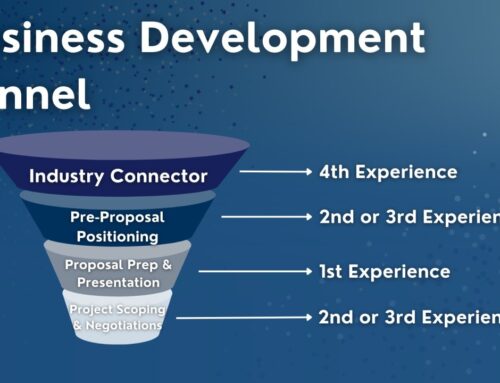I attended the ITS World Congress in Orlando several weeks ago to get up close and personal with an industry I’ve supported for several years. I enjoyed the opportunity to see some familiar faces, got to connect other faces to names and voices, and absorbed a lot of information about the state of transportation technology. As a special bonus, I got to see Ray LaHood deliver a pro-transportation infrastructure investment speech live and in person. That was cool!
My observations lead me to believe that the market described by the term Intelligent Transportation Systems, once conjuring up images of laying cable, signal timing, traffic cameras, and variable message signs, now seems to be covering a lot more ground. Examples like vehicle telematics, electronic tolling, traveler information services, probe data collection, parking management systems, and transit information services are just the tip of a very large iceberg.
If you’ve ever read previous blogs here or spoken to me directly, you might know that I am always interested in how to communicate the hidden world of what You do. This is why I was amused when, in one breakout session at the conference, it was suggested that the ITS professions do a lousy job of touting their own accomplishments to the users who benefit from their expertise and technology. Yes!
- Traffic egress from the Big Game was flawless after the home team’s win! Was it just luck?
- You’ve saved 15 minutes each way in commute time since ORT was implemented on your route! This one is fairly obvious, I am thinking.
- You can change your travel plans effortlessly because your phone tells you about the traffic congestion coming up ahead! What can’t your phone do?
Does the end user know who or what to credit for this gift of time and fewer headaches? Do consumers know what is meant by Intelligent Transportation Systems or ITS? Would we all benefit from having an accessible term to embrace, one which clearly communicated the systems that make driving safer and easier?
With the advent of ubiquitous data, much of it captured wirelessly, the field itself is changing rapidly. Why is it so important for people using these systems to know what the technology is all about? Because consumers are the critical component to its success, not only through their willingness to adopt its usage, but by their understanding that they are actually — thanks to crowd-sourced data — part of the system.
It is important to get overt buy-in from the public (not hidden in EULAs tied to random, non-transportation-related apps), because taking information from users’ cars and phones in any way but an in-your-face opt-in manner will, at best, subvert interested participation. At worst, it will cause roadblocks to the continued spread of efficiency-driving transportation technology. If people know right off that a system collects their data and they understand why giving it permission to do so directly benefits them, the large majority will want to participate (of course, they should also be able to opt out). The end result is that we could all get more bang for the buck from our transportation system.
Getting back to how to communicate this wave of technological innovation on the retail level, FHWA once used the term ‘Intellidrive’ to describe this wireless wonderland of connected vehicles and infrastructure, but the term was recently retired. Because it never had to be adopted on the retail level, Joe or Jane Consumer probably never heard it mentioned or knew what it meant. Now that all of those unassuming folks need to provide the data which helps the systems work, it seems reasonable to put some effort into creating an easily recognizable and comprehensible name to describe what is taking place, even if it muddles the technical and specialty domains of which only those in the industry are aware.
What would you call the new data-driven driving experience?






Leave A Comment